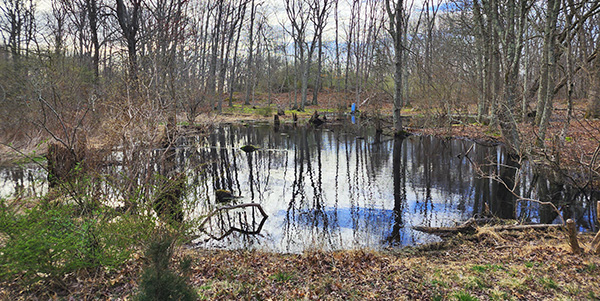
Last year’s World Wetlands Day arrived with more cause for concern than celebration. It was the first event since the Supreme Court’s ruling in Sackett v. Environmental Protection Agency back in May 2023, which redefined the Waters of the United States in ways that left wetlands vulnerable. In the words of Roger Reynolds, our senior legal director, the decision represented “the worst-case scenario for federal wetland protection.”
World Wetlands Day 2025, celebrated across the globe on Sunday, Feb. 2 (yes, even in Punxsutawney, PA), was greeted with renewed commitment to, as its theme suggests, “protecting wetlands for our common future.”
That’s particularly true in New York, which has implemented updated regulations that are expected to protect one million additional acres across the state.
As part of the Save NYS Wetlands Coalition, Save the Sound monitored and submitted feedback during the process, and considers these amendments an essential step for protecting New York’s freshwater wetlands and the communities and ecosystems that rely on them, following the 2022 amendments to the state’s Freshwater Wetlands Act, which these regulations implement.
The biggest change from the draft regulations to the final regulations, and the one that is probably most significant to Save the Sound, has to do with the vernal pool buffers. Under the final rule, DEC regulates a 100-foot buffer around any regulated adjacent area. But for vernal pools known to be productive for amphibian breeding, DEC may extend this adjacent area to protect and preserve the vernal pool. The final rule imposes no limits on the size or shape of regulated adjacent areas for vernal pools; those parameters will be determined on a case-by-case basis based on the specific environmental conditions of the vernal pool.
For example, if agricultural lands are already encroaching on a vernal pool on one side, but on another side its bordered only by forest for miles, DEC could define the regulated adjacent area as only 100 feet on the side nearest the agricultural lands, and 2,000 feet on the other sides, if it were warranted to protect the life histories and habits of the amphibians inhabiting the vernal pool. The draft regulations had simply set an 800-foot buffer around productive vernal pools. The final regulations are an improvement because they give DEC the flexibility to tailor vernal pool regulated adjacent areas to the actual environmental conditions of the area, and provide more protection where it is needed and likely to be effective.
Another key change was a clarification that for a wetland to be classified based on the presence of habitat suitable for an essential behavior of an endangered species, threatened species, species of greatest conservation need, or species of special concern, the species must utilize the habitat. It is not enough that the habitat exists and could be utilized by the species.
The other news worth noting is what did not change from the proposed to the final rule. Save the Sound, our Save NYS Wetlands Coalition partners, and other concerned members of the public requested repeatedly that DEC reevaluate its use of egg mass count thresholds for select wetland species to determine if a vernal pool is “productive,” or at the very least substantially lower those thresholds. DEC declined this suggestion, and the egg mass count method remained in place in the final rule.
On the positive side of “what did not change,” DEC seems to have rejected calls to substantially weaken the rule to ease regulatory burdens on housing and renewable energy developers, at least for now. While Save the Sound understands and empathizes with the need for affordable housing and renewable energy projects, rushing these projects forward at the expense of freshwater wetlands is not the answer. In its responses to comments, however, DEC explains that it “is in the process of finalizing several general permits to provide an efficient path for many projects through the regulatory process.” The first such general permit, for “typical projects,” was released in draft form at the beginning of January, and Save the Sound submitted comments on this draft permit before the close of the public comment period on January 27. DEC has stated that there are three more general permits in the works for urban areas, shallow weedy lakes, and renewable energy. Save the Sound will be keeping an eye out for these draft permits and will comment if it seems necessary to continue our mission to protect and improve the environment of the Long Island Sound region for current and future generations.
Overall, the final regulations are a “win” for the environment, even if they are not absolutely perfect. They will help ensure that our freshwater wetlands and the communities and ecosystems that rely on them are protected from reckless development. We are hopeful these regulations will go a long way for ecosystem health, biodiversity, climate change mitigation and adaptation, and community resilience.
